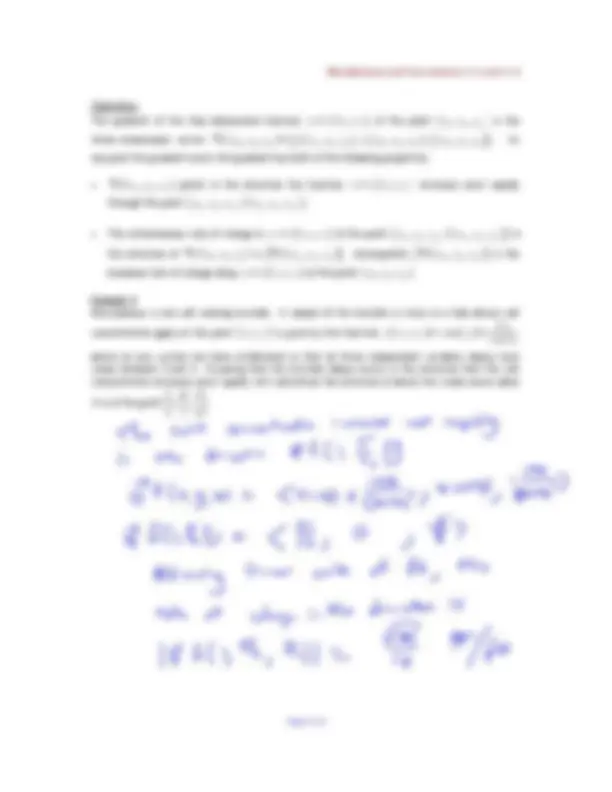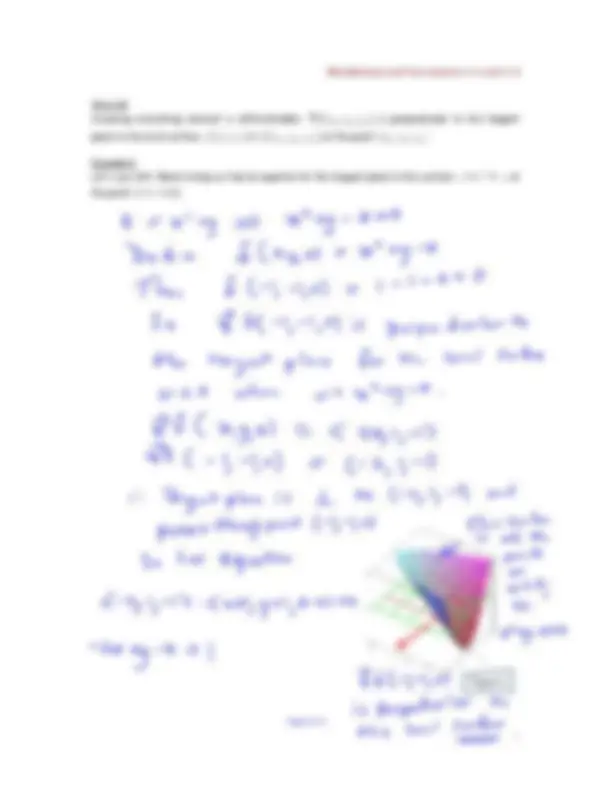





Study with the several resources on Docsity

Earn points by helping other students or get them with a premium plan


Prepare for your exams
Study with the several resources on Docsity

Earn points to download
Earn points by helping other students or get them with a premium plan
Community
Ask the community for help and clear up your study doubts
Discover the best universities in your country according to Docsity users
Free resources
Download our free guides on studying techniques, anxiety management strategies, and thesis advice from Docsity tutors
Material Type: Notes; Class: Vector Calculus I; Subject: Math; University: Portland Community College; Term: Unknown 2007;
Typology: Study notes
1 / 5

This page cannot be seen from the preview
Don't miss anything!




The Implicit Function Theorem
x
y
dy f^ x y
dx f x y
Example 1
Let's illustrate the Implicit Function Theorem using the curve
2 2 2 x y − 4 x = y − 4 at the point
The Implicit Function Theorem gives you the slope of a curve in the xy-plane!
Figure 1
Fact Jack
is perpendicular to the tangent line to
Example 2
Let’s illustrate Jack’s Fact for the function
2
shows the level curves z = − 1 , z = 1 , and z = 3.
Please note that this action is taking place in the xy-plane. Despite that, this fact does have
Figure 2 Figure 3
Definition
any point the gradient exists the gradient has both of the following properties.
Example 4
Missylaneous is one salt seeking microbe. A sample of the microbe is stuck in a tank whose salt
, , sin 2
x f x y z x y x z
where an axis system has been established so that all three independent variables always have
values between 0 and 3. Assuming that the microbe always moves in the direction that the salt
concentration increases most rapidly, let’s determine the direction at which the ‘crobe moves when
it is at the point
.
Word Jill
Example 6
Let's use Jill’s Word to help us find an equation for the tangent plane to the surface
2 z = x + yat
Figure 5